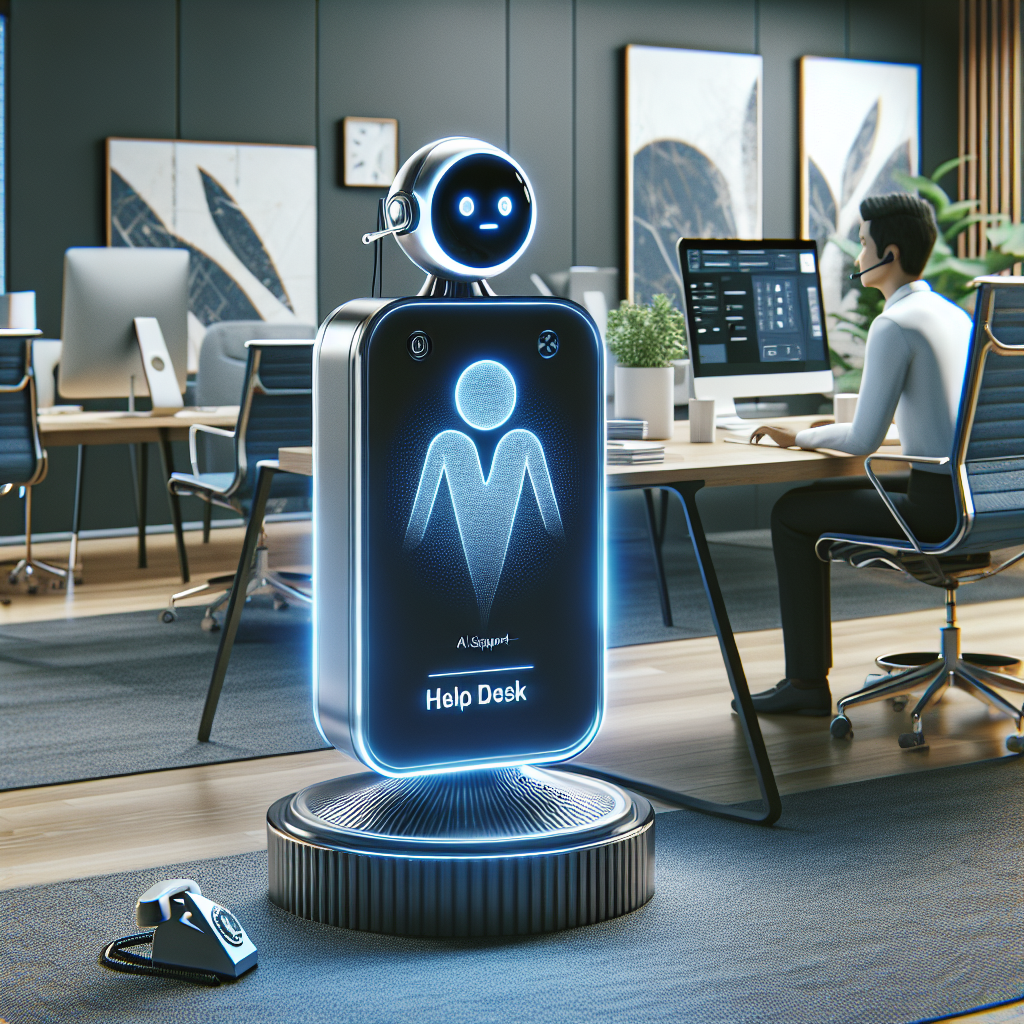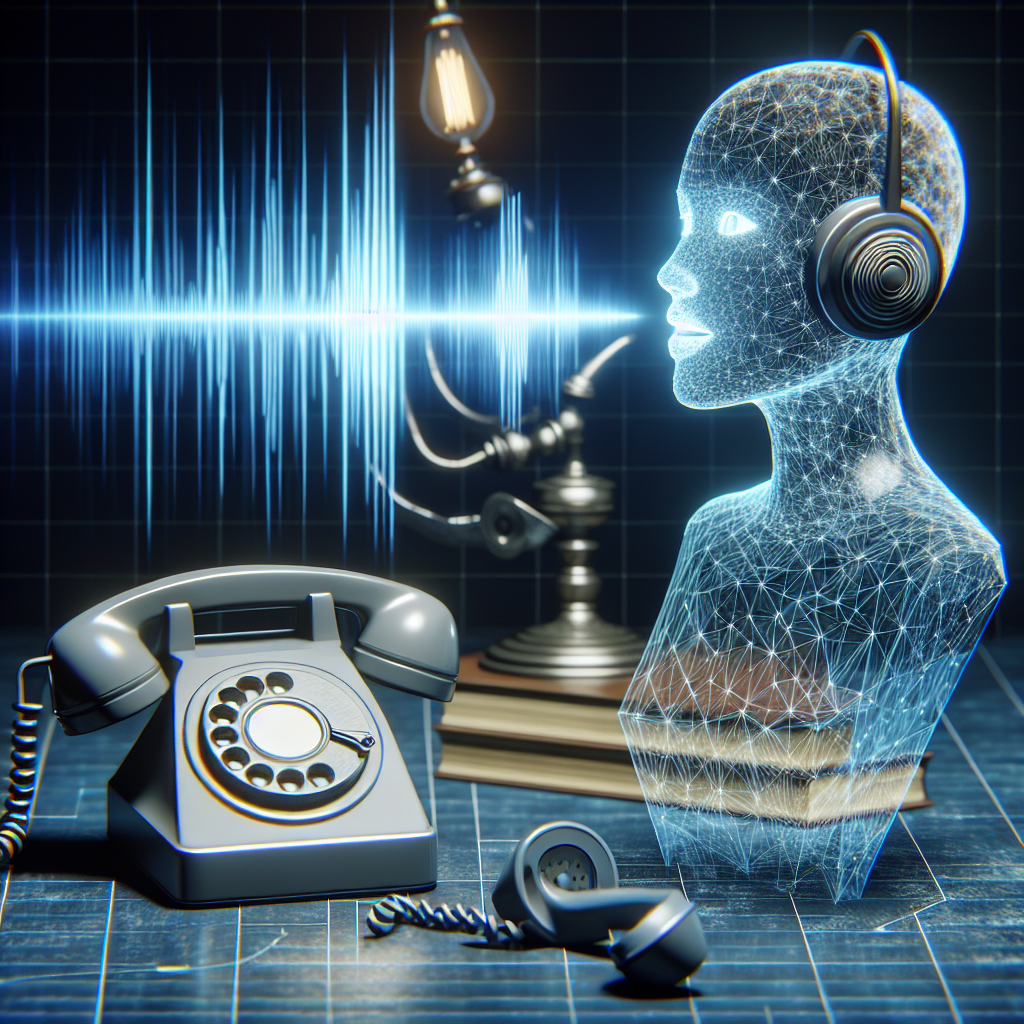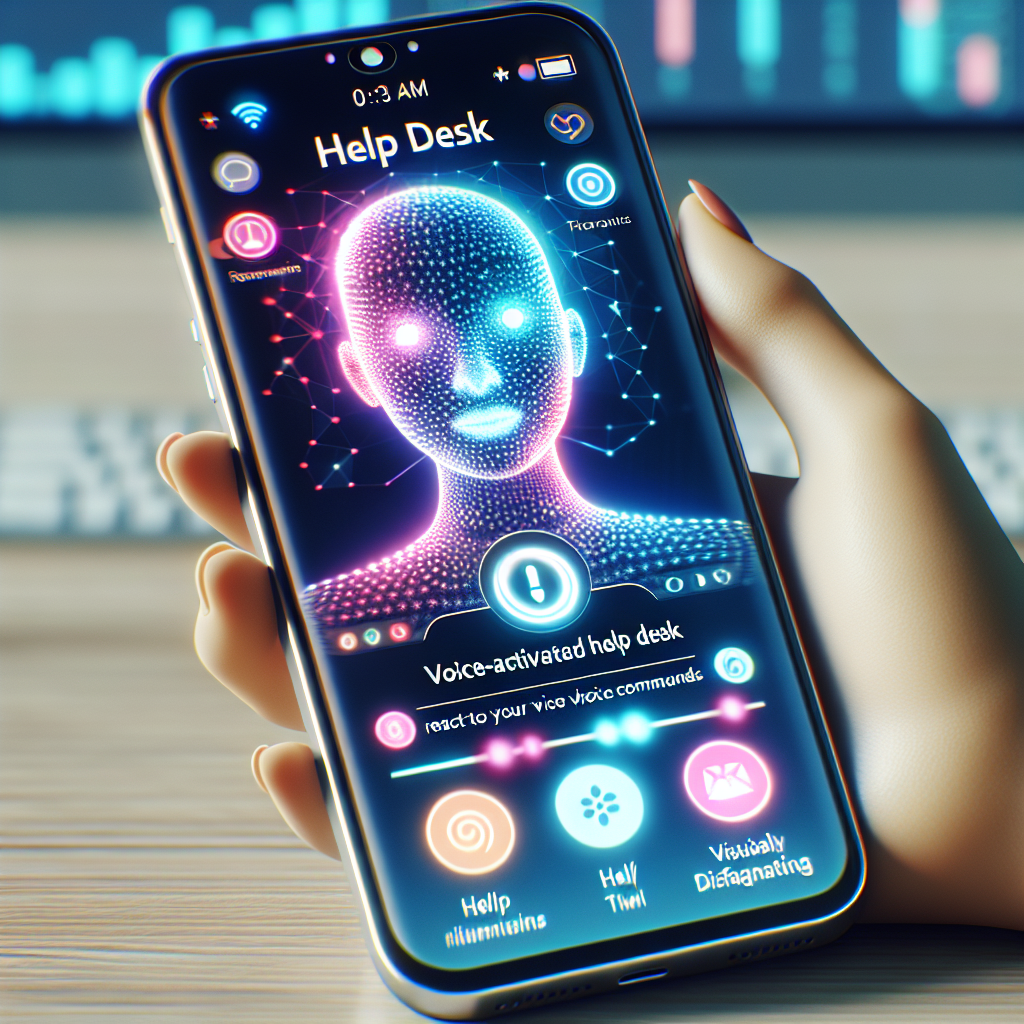
Welcome to the realm of Voice-Activated AI Help Desks, an exciting dimension of technology integrating artificial intelligence and voice recognition for enhanced IT support. Drawing upon cutting-edge advancements in AI, machine learning, and natural language processing, these forward-thinking systems are revolutionizing the way businesses approach help desk roles.

The primary function of a voice-activated AI help desk is to streamline communication in an IT support context. Users can easily report issues or request assistance using voice commands rather than traditional methods (source). By leveraging the unprecedented convenience of voice interaction, these AI systems enhance efficiency and increase user satisfaction.
What makes these help desks highly efficient is the employment of Artificial Intelligence (AI) and Voice Recognition Technology. AI enables the system to understand, learn, and respond to voice commands, while voice recognition technology can recognize and differentiate between different users' voices. When seamlessly integrated, they provide a smart automated solution for IT help desks (source).
The powerful combination of AI and voice recognition has seen Voice-Activated AI Help Desks emerge as a critical component of modern IT infrastructures. More businesses are harnessing this technology to address a range of issues, from simple password resets to troubleshooting technical queries, thereby freeing up valuable man-hours for more strategic tasks.More organizations are gravitating towards Voice-Activated Help Desks to streamline their IT support and services. These advanced frameworks use superior artificial intelligence to assist, support, and satisfy end-users. But do you ever wonder how exactly do these AI Help Desks operate and manage to understand your voice commands?
At their crux, these AI-driven help desks function through a combination of sophisticated technologies - speech recognition, natural language processing (NLP), and machine learning (ML).
The process initiates with speech recognition, where the system converts spoken language into written text. This is the primary interface between the user and the help desk. Users pass the command through their voice, and the system catalyzes speech into text.
Next up, natural language processing comes into play. This technology enables the system to understand the context and semantics of the text transcribed from the spoken language. NLP revolves around the computer’s ability to comprehend the nuances of human language, including slang, colloquialisms, and regional dialects. For instance, if a user says “Reset my password,” NLP equips the system with the necessary intelligence to interpret the request accurately.
In the final stage, machine learning empowers the Voice-Activated Help Desk to 'learn' and 'improvise'. With each support call, it collects data, learns from these interactions, and refines its algorithm to improve future user engagement. The more data fed into the system, the better it gets at anticipating user requirements and delivering speedy, accurate support.
Thus, Voice-Activated Help Desks are not only setting a new standard for IT support but also redefining customer service dynamics in organizations. They amalgamate state-of-the-art science and smart thinking to deliver an effortless service model, optimized user experience, and swift resolution time. The continuous advancement in AI technologies foresees an even brighter future for this booming sector of IT.
The integration of AI-powered help desks with existing IT infrastructure is changing the landscape of IT support. With voice-activated functionalities, these AI systems present a seamless way to receive and resolve IT-related issues efficiently. What's more fascinating is how they can be intertwined with the current IT systems and workflows. Leveraging platforms such as Zapier unlocks a world of app connectivity, driving increased synergy between teams and systems.

Working hand in hand with existing business systems, the AI-powered help desks act as a comprehensive solution for IT support. Organizations no longer need to overhaul their existing frameworks to accommodate these systems. A plug-and-play approach allows for easy integration with the existing IT environment. Therefore, integration isn't just seamless; it's also convenient, reflecting the ingenuity behind AI technology.
The use of Zapier in particular to connect applications enables smooth transfer of information across platforms. The implication is that voice-activated help desk operations can readily access necessary information from connected apps, expediting issue resolution. Furthermore, with app integration, different teams within the organization can contribute to and benefit from the AI help desk's support operation.
Every interaction with the AI help desk serves as a conduit to automate certain tasks. For instance, when an IT system misbehaves, a user can voice out the issue to the AI help desk. From there, tasks can be automatically triggered in Zapier, such as sending notifications to the IT team, restarting the system remotely, or even resetting system settings. Hence, voice-activated IT support extends beyond just answering queries — it's a component of an interconnected, automated workflow.
Through swift integration into existing IT infrastructure and connectivity to apps via connectors like Zapier, AI-powered voice-activated help desks emerge as reliable, efficient, and game-changing tools in the field of IT support.
Artificial Intelligence (AI) has been increasingly used in various business operations and one of the most impactful areas has been in the realm of IT support. Voice-activated help desks powered by AI are revolutionizing the support industry with their practical applications and numerous benefits.
One of the real-world instances where AI-powered help desks have made considerable improvements is in the telecommunications industry. Large-scale telecom companies such as AT&T have adopted AI for customer service, with impressive results. Machine Learning algorithms aid in predicting and resolving customer issues even before they reach out, significantly improving response times and thereby increasing customer satisfaction.
Similarly, AI help desks have proven effective in the retail sector. Companies like Audible have integrated AI voice support to streamline customer inquiries regarding audiobook issues, subscriptions, and other related concerns. Enhanced customer satisfaction rates were the immediate results of this transformative approach, as query resolution became swifter and more efficient.
These voice-activated assistance solutions have also paved their way into the banking sector. Banks such as JPMorgan Chase have started utilizing AI-powered help desks to facilitate fund transfers, report lost or stolen cards, or check account balance without human assistance. This helps increase the cost-efficiency by reducing the workload of the human staff while providing 24/7 service to customers.
Overall, the integration of AI in IT support stands as a testament to the balance between technological evolution and customer service improvement. Voice-activated help desks have proven their worth in response time reduction, heightened user satisfaction, and better cost-effectiveness. The continued development of AI-powered support systems promises even more exciting possibilities for various industries in the near future.
As businesses are increasingly using voice-activated help desks, powered by artificial intelligence (AI) for IT support, it's imperative to probe into some of the potential challenges and intricate considerations entwined with this technology.

Foremost among these obstacles is potential privacy concerns. No technology is immune to possible data breaches, and voice-activated AI is no exception. Companies must ensure they are in alignment with GDPR and other applicable privacy laws before implementing voice-activated support.
Second, the ongoing training and learning curve can't be sidelined. AI learns from data and ongoing interactions — meaning the more usage, the better it adapts.
Studies show that a consistently trained AI can provide better customer service over time. Yet, this also means an enduring commitment to training and refinement.
The third issue is managing customer expectations. Customers may expect instant solutions via phone calls. However, while Gartner affirms AI can deliver faster resolutions, it isn't the panacea to all IT issues. A blended support environment integrating AI and human touch may be the most feasible answer.
Although voice-activated help desks pose some challenges, their potential benefits of improved efficiency, accessibility, and customer satisfaction cannot be downplayed. Shaping the future of IT support, they require meaningful understanding, careful planning, and impeccable execution.
The dawn of Artificial Intelligence (AI) has drastically revolutionized countless industries including IT Support, kicking off a wave of unparalleled innovation and improvements. Among the most promising applications is the use of Voice-Activated Help Desks.
Imagine a future where support desks become more closely fused with sophisticated AI functionalities to deliver faster, more effective client service. Thanks to advanced technologies such as natural language processing (NLP), automatic speech recognition (ASR) and machine learning (ML), IT support systems will far surpass the traditional human-centric model.
Predictive Support is a fascinating application of AI, particularly with IT support. By learning from historical data, artificial intelligence can diagnose system problems before they culminate in actual operational issues, notifying the respective personnel ahead of time. This predictive capability will heighten productivity, minimize work stoppages, and potentially save companies vast amounts of money in downtime.
Voice-activated AI for IT support would also enhance the client experience by offering Personalized Services. Based on the customer's interaction history and profile, the system would be able to provide customized solutions geared specifically to that client’s issue. This function will produce a more relevant, efficient, and satisfying customer service experience.
Moreover, AI technology's deep learning capability, an offshoot of machine learning, may further improve IT support services by gaining a better understanding of common user issues—and offering more effective, instant solutions.
However, despite the exciting possibilities, it’s crucial to acknowledge that AI cannot replace human judgment and intuition. True, it can improve efficiency, but the human touch remains integral, particularly in interpreting complex and nuanced issues concerning the IT industry.
While the technology advances, human-to-AI intercommunication is virtually inevitable. When that happens, Voice-Activated Help Desks will have transformed how we understand and deliver IT support.
Start your free trial for My AI Front Desk today, it takes minutes to setup!








